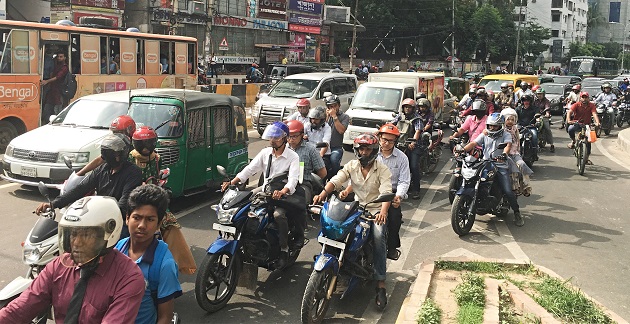As progress is made in the prevention and control of infectious diseases, the burden of noncommunicable diseases and injuries is increasing.1 Road traffic injury is the leading cause of death for children and young adults aged 5-29 years, and the eighth leading cause of death for all age groups, surpassing HIV/AIDS, tuberculosis and diarrhoeal diseases.2
In recognition of the health, social and economic impact of road traffic crashes, the Sustainable Develop Goals call on countries to specifically halve the number of global deaths and injuries from road traffic accidents by 2020 and, by 2030, provide access to safe, affordable, accessible and sustainable transport systems for all, improving road safety, notably by expanding public transport, with special attention to the needs of those in vulnerable situations, women, children, persons with disabilities and older persons.

Achieving this ambitious and essential agenda will require action from across sectors, including transport, police, health, and communications.
Enacting and enforcing legislation on key risk factors for road traffic crashes - to reduce speed limits in urban and rural areas, mandate use of helmets, seatbelts in the front and back seats, and child restraint systems in cars, and restrict or prohibit the use of mobile phones while driving - is a critical component of an integrated response to preventing deaths and disability from road traffic crashes.
Legislation, together with standards and compliance regimes for the licensing and disqualification of drivers and riders, needs to be aligned with enforcement, information campaigns and, in some cases, in-vehicle measures such as the availability of seat-belts, to be effective. Prompt and frequent enforcing actions must be widespread and sustained to detect infringements as well as increase public knowledge and perception that violations of road traffic rules will result in penalties.3
Creating a safe road environment also requires redesigning infrastructure and systems with an emphasis on safety. Available and accessible foot paths, crossings, and dedicated cycle lanes can keep pedestrians and cyclists safer.4
As part of the multisectoral response, the health and transport sectors have an important role in ensuring first-responders can reach those involved in a crash, quickly, to provide on-site care, and that health facilities are equipped to provide quality trauma care.
Deaths and disability from road traffic crashes can be prevented. Doing so requires a whole-of -society and whole-of-government response. Such commitment is an investment in the future prosperity and wellbeing of the nation.
WHO is committed to continue working with the Government of Bangladesh to achieve the Sustainable Development Goals and safeguard the future of youth and the generations to come.
Reference:
- 1 World Health Organization. Disease, injury and causes of death country estimates, 2000–2015 [Internet]. World Health Organization; 2017 [cited 2018 Oct 29].
- 2 Idem
- 3 World Health Organization. Save LIVES: a road safety technical package [Internet]. 2017 [cited 2018 Nov 1].
- 4 Idem
